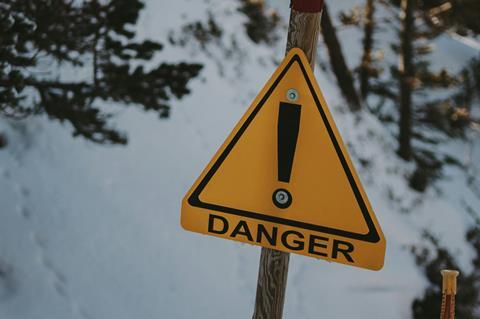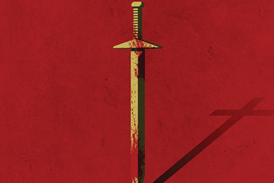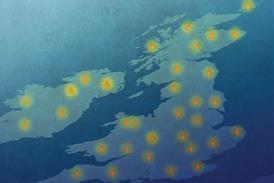While many churches prioritise order, structure, and predictability, Rev Jamie Sewell says true revival isn’t born of control, but of holy disruption

At 41, I found myself feeling bored. Not because life lacked meaning. I’m leading a church I love, I have a wonderful wife and son, and I see signs of growth and grace all around. But something was missing.
I’ve always been a competitive sportsman. I was used to training for something, lining up at the start of a race with adrenaline in my veins and nerves in my stomach. And as much as I was fulfilled in ministry and family, I realised I had lost that sense of risk. That tingle of danger. That thrill of chaos.
So I signed up for a charity boxing match.
As I waited behind the curtain, listening for my name “The Raging Rev!” I felt something awaken in me. Fear. Excitement. A strange surge of joy. And as I stepped into the ring, heart pounding, fists clenched, I felt more alive than I had in years.
That moment made me reflect on something deeper. Why was I craving chaos?
Because we all are.
Creation’s need for chaos
From the beginning, chaos has been part of the human story. In scripture, it’s often represented by water. The dark depths over which the Spirit hovered, the storm that threatened the disciples’ boat, the sea that swallowed Jonah whole. Chaos is always lurking at the edge of the biblical world. Yet it’s also the place where God acts. Where he calls. Where he transforms.
Baptism itself is a plunge into chaos, a death and a drowning, followed by a resurrection into life. To follow Jesus is not to avoid the storm. It is to walk into it, trusting that he is Lord over wind and waves.
And yet the modern church can often become a fortress of safety. We prize order, structure, predictability. We build Sunday services that are tidy and secure. We draw in people who like rules, repetition, and knowing what’s next. And slowly, without noticing, we can become communities that fear chaos more than we fear being ineffective. Ineffective in fulfilling the Great Commission. Ineffective in sharing the good news of Jesus Christ with our parishes, our cities, and our nations.
But look at the gospels. Look at the early church. These were not communities avoiding chaos. They were agents of holy disruption. The apostles didn’t ask what was safe. They asked what was faithful. The early church didn’t grow by creating comfortable routines. It grew by risking everything to follow Jesus into the unknown.
And still today, humanity is drawn to chaos.
I see it in the addicts I work with. Men and women who turn to Jesus, find peace, and yet feel the pull back into the drama and danger of their old lives.
I see it in young people attracted to gangs, violence, and drugs.
I see it in sports. I see it when my son’s playing rugby, caught underneath a pile of boys rucking over the top of him. He’ll describe it afterwards with joy in his voice, telling me how he could feel himself being crushed, how he couldn’t breathe. And yet all I see is a young boy thrilled to be alive. He’s excited by the risk, by putting his body on the line for something bigger than himself. He’s learning that danger, purpose, and joy often live in the same space.
We want to feel alive. And if we don’t find it in a holy purpose, we’ll find it somewhere else. Even in destruction.
Holy risk and reward
What does it look like for the Church to walk into chaos? I guess it begins with leaving the safety of our buildings and stepping into spaces of uncertainty, where outcomes are unpredictable and comfort can’t be guaranteed. Years ago, I was working in a deprived estate full of high-rise blocks.
While reflecting on Jesus sending out the 72, in Luke 10, it struck me: if Jesus sent pairs into 36 different places, maybe we could break our own parish into tower blocks… and go. So, with a small team, we each fasted and prayed in pairs over specific tower blocks. Then, on a Saturday, we knocked on every door with a simple message: we’re from the local church, Jesus loves you, and we’d love to pray for you.
I stepped into the lift and started my ascent to the 20th floor. As the lift halted and doors opened, I stepped out of the lift heart pounding, palms sweating. Six flats on each of the 20 floors…That was 120 households I was about to interrupt with the gospel! I was terrified!
To lead people out of the chaos, Jesus first had to enter it
I genuinely hoped no one would answer the door. But when they did, it opened up real conversations with people who’d never otherwise encounter the Church. We gathered afterwards and shared stories. And something came alive in us. That experience wasn’t just about reaching others. It was about discipling us into faith, obedience, and holy risk. We were learning to walk on water.
And while knocking on doors might seem small or outdated, for us it represented something far bigger, a shift in posture. A choice to move from comfort to courage. That’s what we need in the Church today. Not necessarily more door-knocking, but a willingness to try, to risk, to stretch, to fail, to go. Whether it’s launching something new, walking with those in deep need, or simply starting conversations that might cost us socially, we need to become communities where risk is not avoided but expected. That’s how disciples grow. That’s how mission happens.
The same thing happened this past Christmas. We delivered nearly 2,000 gift bags around White City, each one with a simple card, a verse of scripture, and an invitation to our Christmas carol service. The people most drawn to take part? Our young people. While many adults held back in fear, the youth stepped forward with fear and excitement. They knocked, smiled, invited, prayed.
As I watched them, it dawned on me that we were doing more than just outreach. We were embodying the very story we were inviting people to remember. We had left the safety of the church to enter the chaos and unpredictability of the community. And in doing so, we were imitating Christ. He left the comfort of heaven to step into the mess of earth. We were sharing a message of love, just as he had. But more than that, we were following his example: to lead people out of the chaos, he first had to enter it.
Will you walk on the water?
That’s what incarnational mission looks like. Leaving the safety of what we know to meet people where they are. Training people to walk on water means giving them chances to step out of the boat, not just in theory but in lived, local, risky obedience. It’s in those moments we learn that chaos isn’t the enemy. It’s often the classroom of faith.
What if we raised teenagers not just to behave, but to fight the good fight? To throw themselves, gloves on, into the battle against injustice, despair, addiction, loneliness, and exploitation?
What if church leaders allowed ourselves to get uncomfortable again? To try things that might fail. To follow the Spirit into places that don’t feel safe but might just be holy?
Because revival doesn’t come through control. It comes through surrender. Through risk. Through chaos that is met by the presence of Christ.
Jesus is still found in the storm. The only question is whether we are willing to step out of the boat.





































1 Reader's comment